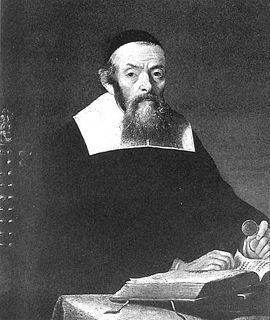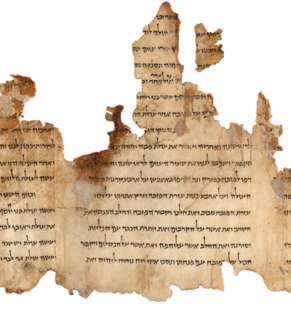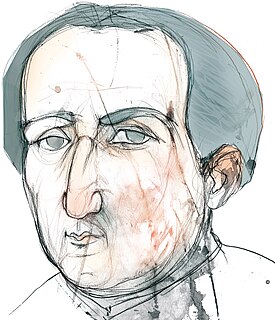
Akiva ben Yosef also known as Rabbi Akiva, was a leading Jewish scholar and sage, a tanna, of the latter part of the first century and the beginning of the second century. Rabbi Akiva was a leading contributor to the Mishnah and to Midrash halakha. He is referred to in the Talmud as Rosh la-Hakhamim "Chief of the Sages". He was executed by the Romans in the aftermath of the Bar Kokhba revolt.

The Jerusalem Talmud, also known as the Palestinian Talmud or Talmuda de-Eretz Yisrael, is a collection of Rabbinic notes on the second-century Jewish oral tradition known as the Mishnah. Naming this version of the Talmud after the Land of Israel rather than Jerusalem is considered more accurate by some because, while the work was certainly composed in "the West", i.e. in the Holy Land, it mainly originates from the Galilee rather than from Jerusalem in Judea, as no Jews lived in Jerusalem at this time. The Jerusalem Talmud was compiled in the Land of Israel, then divided between the Byzantine provinces of Palaestina Prima and Palaestina Secunda, and was brought to an end sometime around 400. The Jerusalem Talmud predates its counterpart, the Babylonian Talmud, by about 200 years, and is written in both Hebrew and Jewish Palestinian Aramaic.

Hakham is a term in Judaism, meaning a wise or skillful man; it often refers to someone who is a great Torah scholar. It can also refer to any cultured and learned person: "He who says a wise thing is called a hakham, even if he be not a Jew." Hence in Talmudic-Midrashic literature, wise gentiles are commonly called hakme ummot ha-'olam.
Rabbi Isaac ben Jacob or Yitzhak ben Yaakov, nicknamed "ha-Lavan" or "the white" was a 12th-century rabbi of Bohemia. He was a Tosafist and liturgical poet who flourished at Prague in the late 12th century. He was the brother of the renowned traveler Petachiah of Regensburg. He was among the earliest of the tosafists, a contemporary of Rabbi Eleazar of Metz, and a pupil of Rabbenu Tam. According to Recanati, Isaac directed the yeshibah of Ratisbon. He also lived at Worms for a time. Isaac is mentioned in the Tosafot, and Isaac ben Moses, in his "Or Zarua'," No. 739, quotes Isaac ben Jacob's commentary on Ketubot, a manuscript of which exists in the Munich Library. He is also mentioned in a commentary to the Pentateuch written in the first half of the 13th century. There is a piyyuṭ signed "Isaac b. Jacob," whom Zunz supposes to be lsaac ben Jacob ha-Laban.

Johanan HaSandlar was a rabbi who lived in the second century.
Jose ben Jochanan was Nasi (president) of the Sanhedrin in the 2nd century BCE. He was a native of Jerusalem. He and Jose ben Joezer were the successors and, it is said, the disciples of Antigonus of Sokho, and the two together formed the first of a series of duumvirates that transmitted the traditional law; in each pair one, according to tradition, was a prince and a president ("nasi"), and the other vice-president, of the Sanhedrin.
Jacob Hagiz (1620–1674) was a Jewish Talmudist born of a Sephardi Jewish family at Fez. Ḥagiz's teacher was David Karigal, who afterward became his father-in-law. About 1646, Ḥagiz went to Italy for the purpose of publishing his books, and remained there until after 1656, supporting himself by teaching. Samuel di Pam, rabbi at Livorno, calls himself a pupil of Ḥagiz. About 1657, Ḥagiz left Livorno for Jerusalem, where the Vega brothers of Leghorn had founded a bet ha-midrash for him, and where he became a member of the rabbinical college. There a large number of eager young students gathered about him, among whom were Moses ibn Ḥabib, who became his son-in-law, and Joseph Almosnino, later rabbi of Belgrade. Another son-in-law of his was Moses Ḥayyun, father of Nehemiah Hayyun.
Assi II was a Jewish Talmudist, known as an amora, who lived in the Land of Israel, of the third generation, 3rd and 4th centuries, one of the two Palestinian scholars known among their contemporary Jewish Talmudical scholars of Babylonian as "the judges of the Land of Israel" and as "the distinguished priests of the Land of Israel," his companion being R. Ammi. Assi was born in Babylonia, where he attended the college of Samuel of Nehardea, but later emigrated in consequence of domestic trouble.

Jacob ben Aaron Sasportas, was a Rabbi, Kabbalist, and anti-Shabbethaian; he was the father of Isaac ben Jacob Sasportas.
Shemariah ben Elhanan was head of the yeshivah of Cairo, Egypt, about the end of the 10th century. Abraham ibn Daud relates that Ibn Rumais, an Arab admiral, had captured four scholars who were voyaging from Bari to Sebaste to collect money for the maintenance of the great school in Babylonia, and that one of the four was called Shemariah b. Elhanan. Shemariah was sold by his captor at Alexandria, where he was afterward ransomed by rich Jews.
Nathan the Babylonian, also known as Rabbi Nathan, was a tanna of the third generation.
Chaninah, also called Haninah, Chananiah, etc. was a Tanna of the 2nd century, contemporary of Judah ben Bathyra, Matteya ben Ḥeresh, and Jonathan. Who his father was is not stated; nor is anything known of his early years. He was named after his grandfather, Hananiah, and educated by his uncle, from whom he received his cognomen. In some baraitot, however, he is cited by his prænomen alone.
Matteya ben Heresh or Mattithiah was a Roman tanna of the 2nd century.
Natronai Ben Hilai was Gaon of the Sura Academy early in the second half of the 9th century.
Simeon Kayyara, also spelled Shimon Kiara, was a Jewish-Babylonian halakhist of the first half of the 8th century. Although he lived during the Geonic period, he was never officially appointed as a Gaon, and therefore does not bear the title "Gaon."
Zemah ben Hayyim was Gaon of Sura from 889 to 895. He was the stepbrother and successor of Nahshon ben Zadok, and has become known especially through the reply which he made to the inquiry of the Kairwanites regarding Eldad ha-Dani. This responsum, which appeared in part in the first edition of the Shalshelet ha-Ḳabbalah, was republished as completely as possible by A. Epstein in Vienna in his Eldad ha-Dani. It embraces nine points and concludes with an apology for Eldad's forgetfulness. According to Epstein, only one other responsum by Ẓemaḥ has been published; it is given in the Constantinople edition of the Pardes, and ends with the same words as does the first-mentioned responsum: לנטות ימין ושמאל. I.H. Weiss, however, ascribes to this gaon also the authorship of responsa in Sha'are Ẓedeḳ and in the compilation Ḥemdah Genuzah. Nothing is known of the gaon's personal career.
Hanan the Egyptian was a rabbi of the 2nd century who first lived at Alexandria. He later moved to Judaea and was active among the scholars of Jabneh. He was a disciple of Rabbi Akiva and is quoted among "those who argued before the sages." Only one law, relating to the Temple service on Yom Kippur, is preserved in his name.
Simeon the Yemenite or the variant Simeon of Timnah was a Tanna of possible Yemenite origin who was active in Judaea.

Rachel, wife of Rabbi Akiva was a late 1st-century CE Jewish resident of Judea who is cited by the Talmud and Aggadah as a paragon of the Jewish wife who encourages her husband to pursue Torah study and is willing to make personal sacrifices to achieve that goal. She was the wife of the Tanna Rabbi Akiva, who became one of the greatest Torah scholars in Jewish history. Rachel played a significant role in encouraging Akiva to pursue Torah study, as he was uneducated when they married. Her father, the wealthy Kalba Savu'a, disowned her over her choice of husband, and the couple lived in dire poverty. With Rachel's blessing, Akiva left to study in a Torah academy for 24 years. He returned home a renowned scholar accompanied by 24,000 disciples. When Rachel came out in ragged clothing to greet him, his disciples tried to push her aside. Akiva told them, "Leave her. What is mine and what is yours is hers". Upon seeing his son-in-law's Torah scholarship, Kalba Savu'a reconciled with him and gave him half his wealth. Later Akiva had a special golden diadem fashioned for Rachel, depicting the city of Jerusalem. The tomb of Rachel in Tiberias is a pilgrimage site for men and women.











